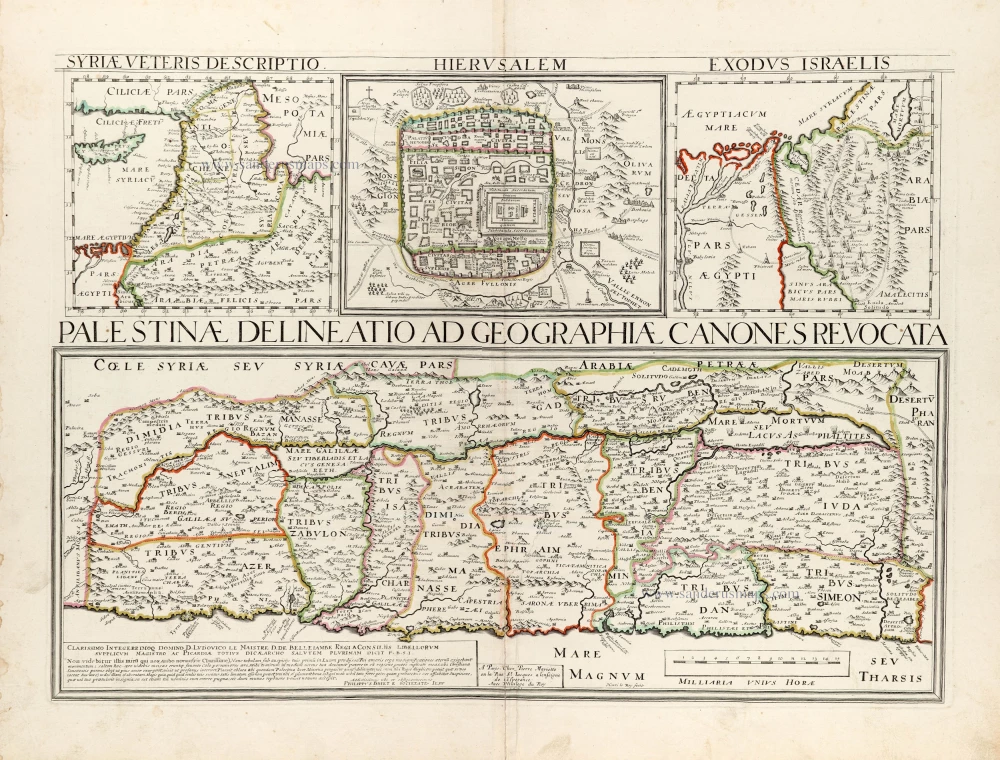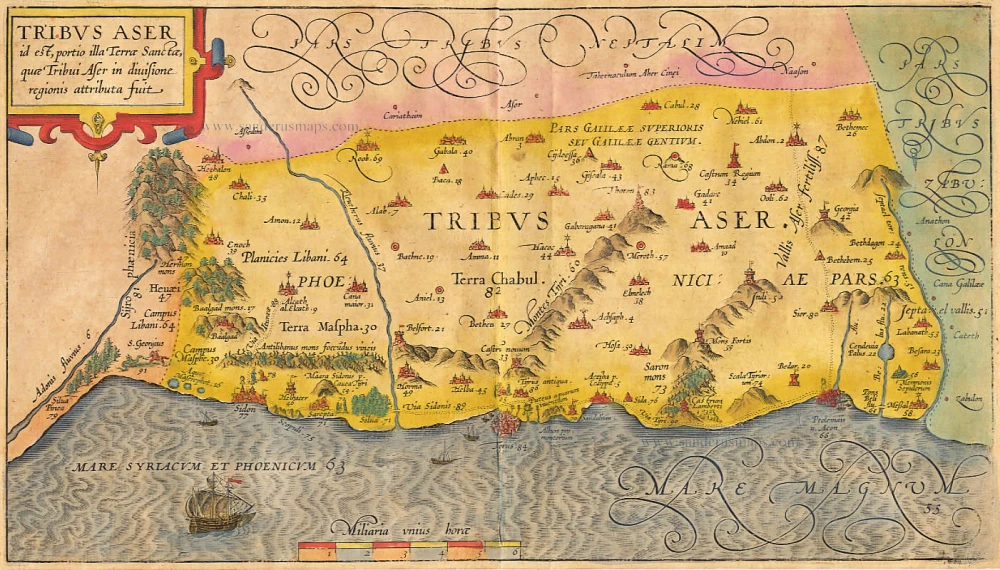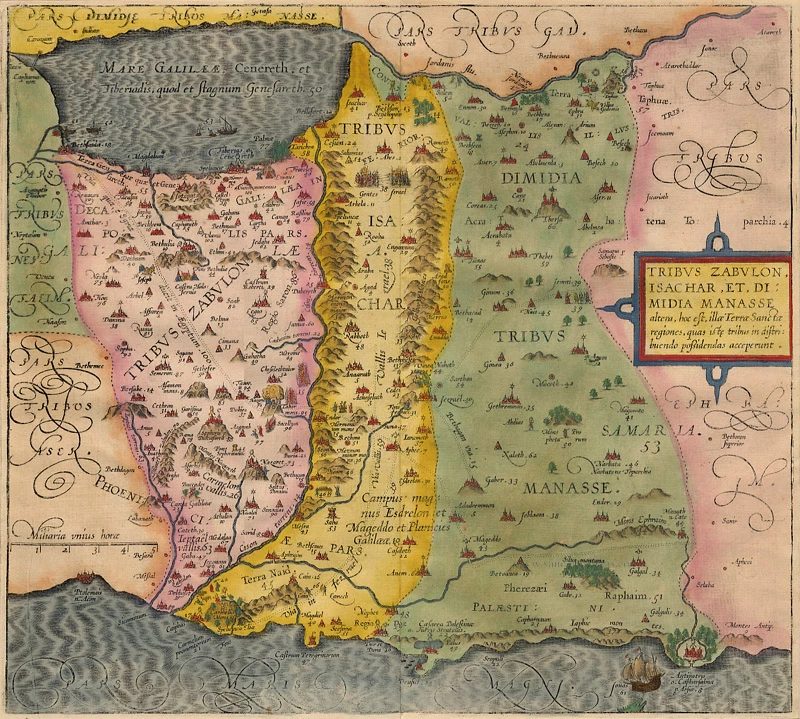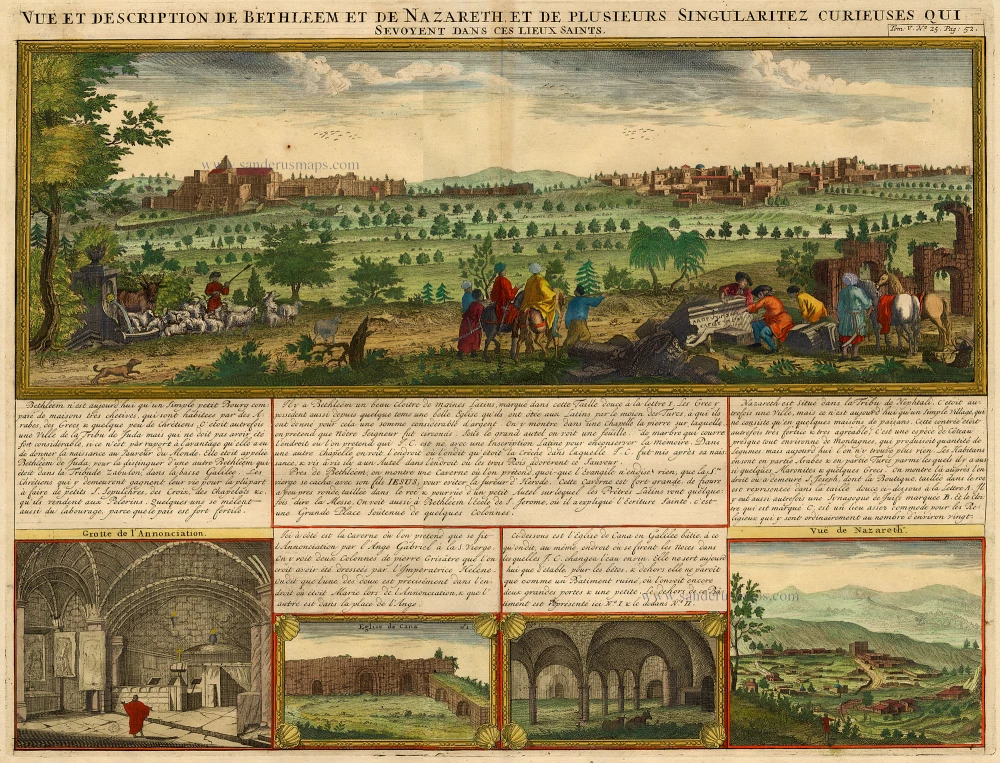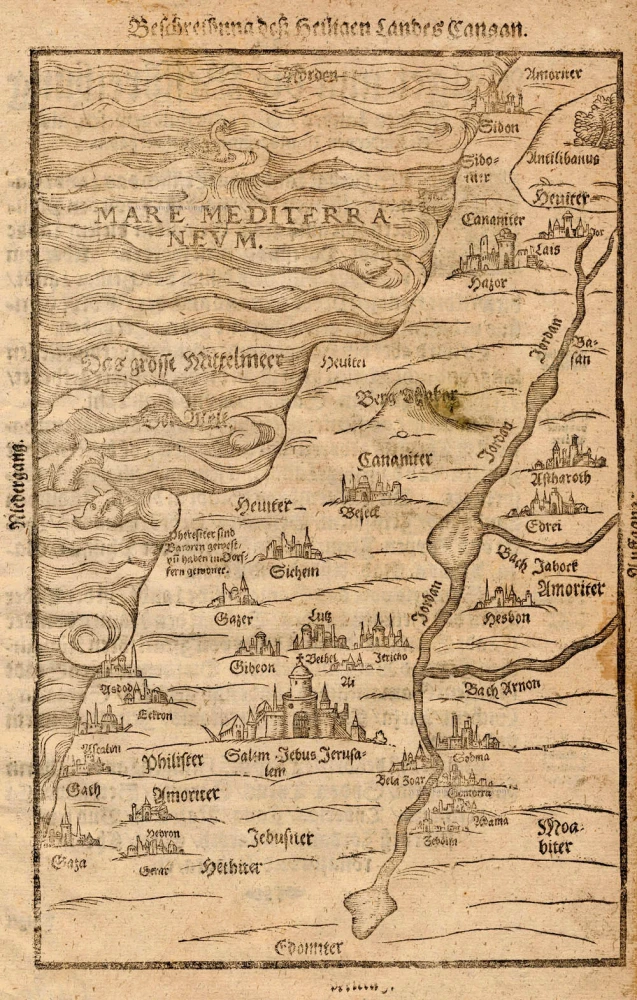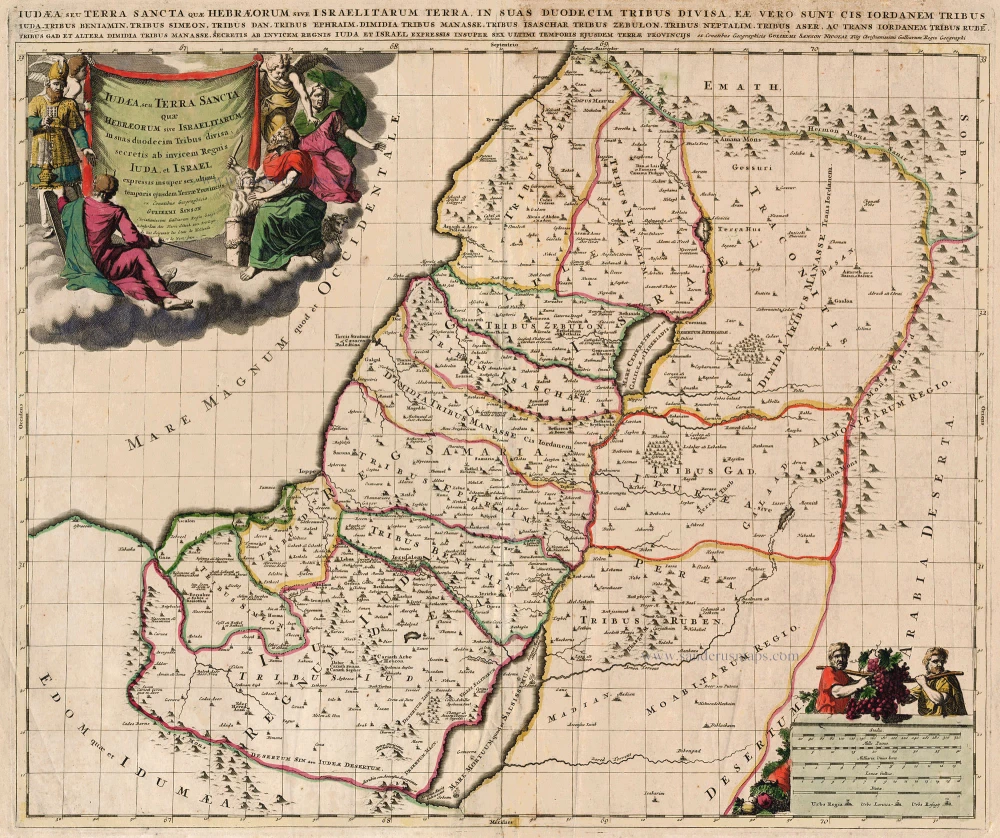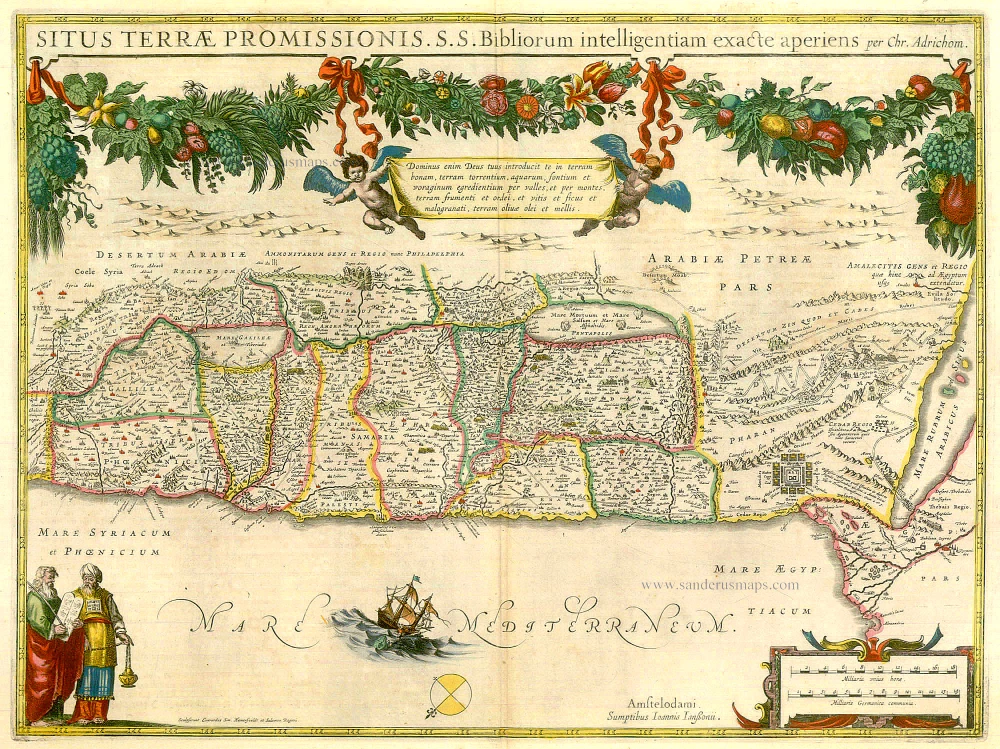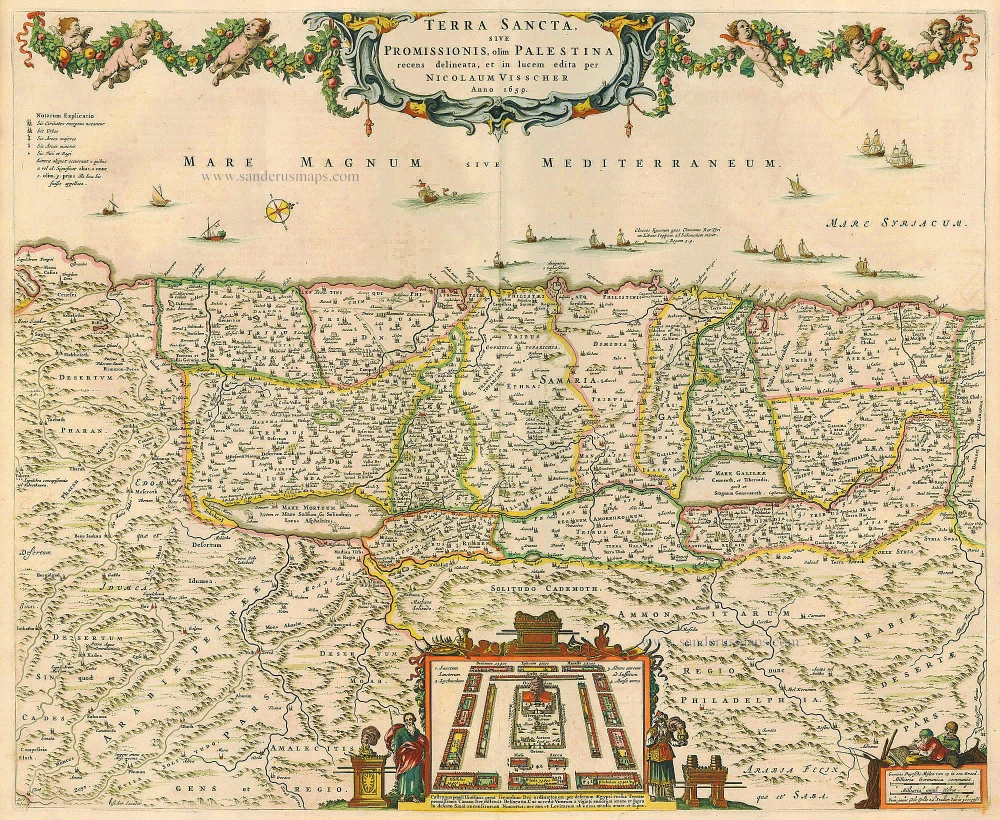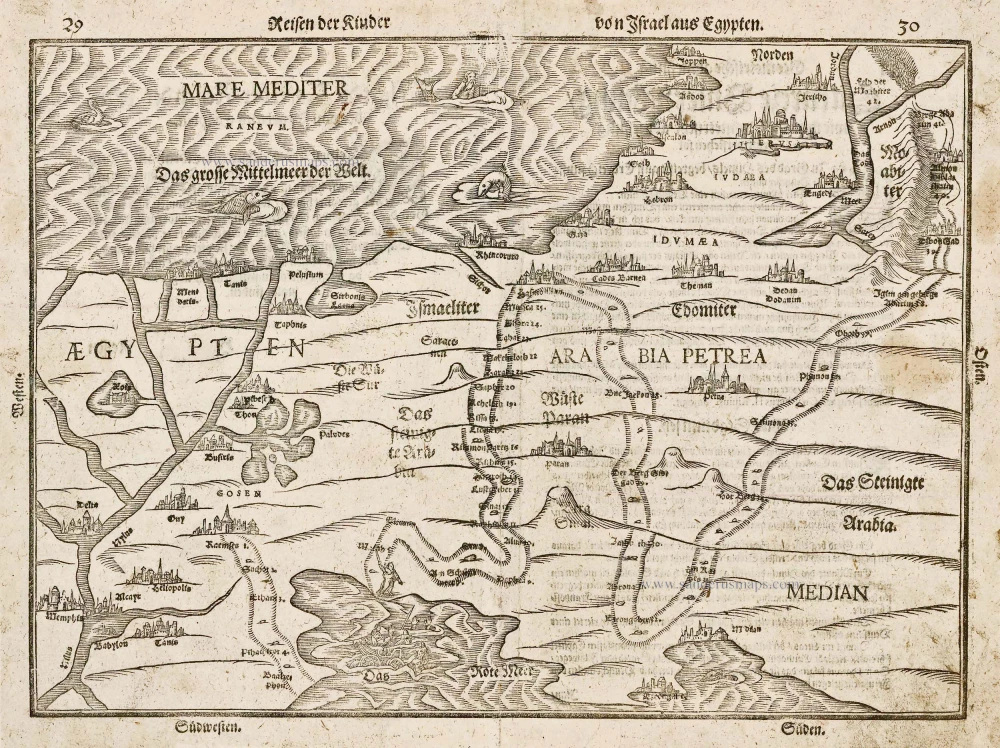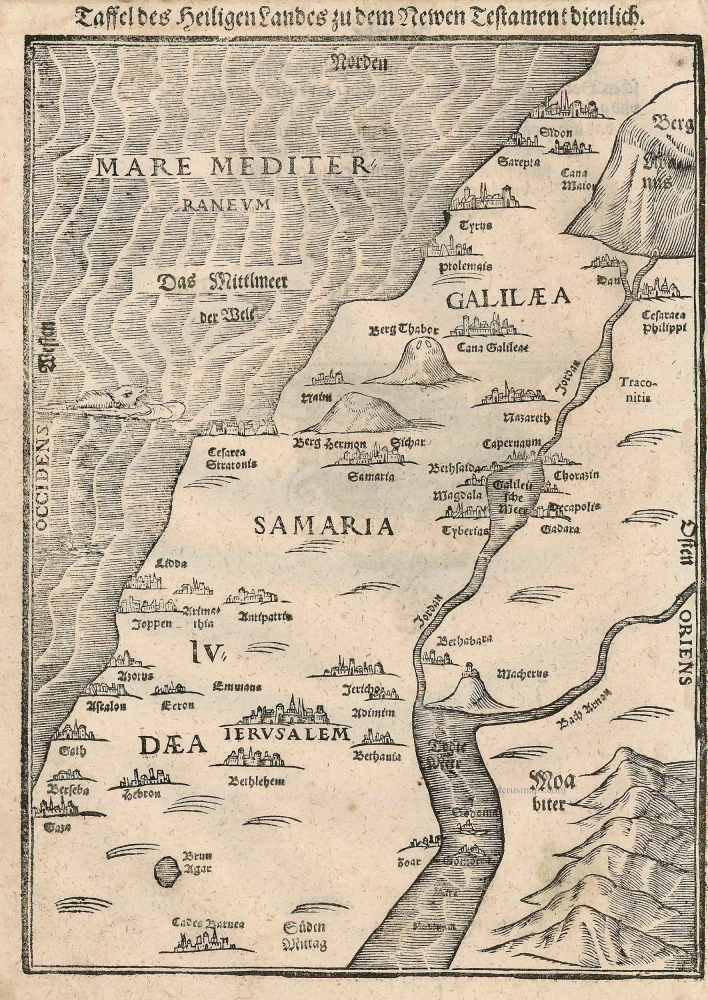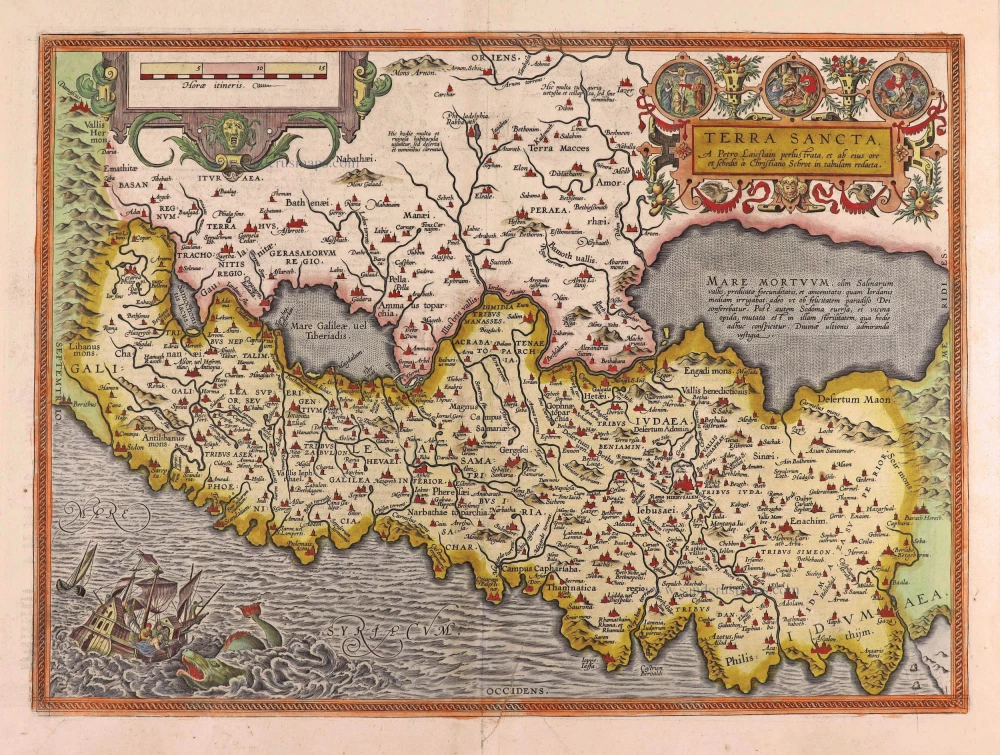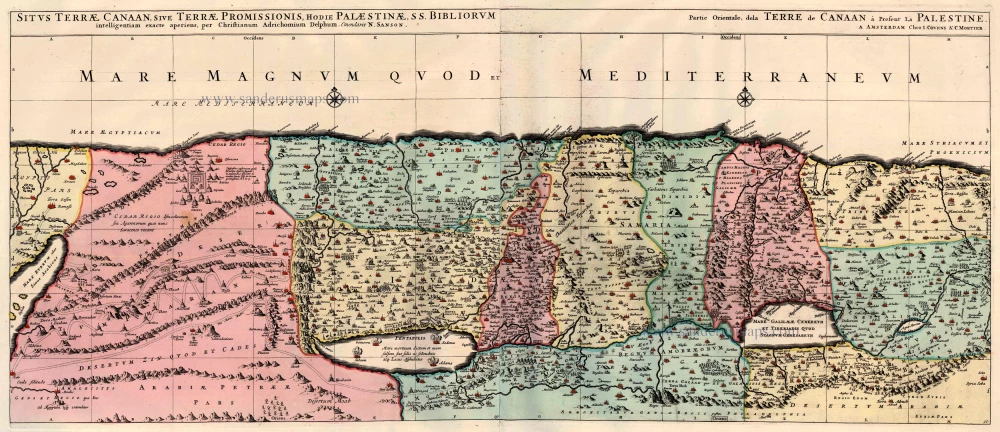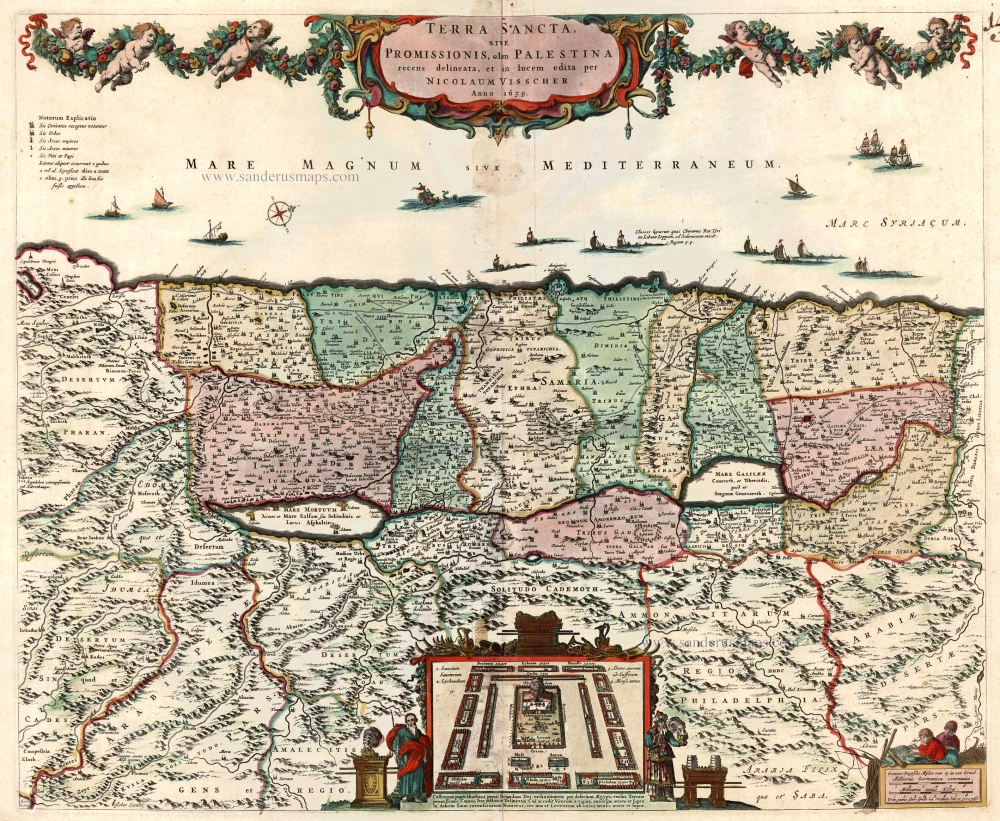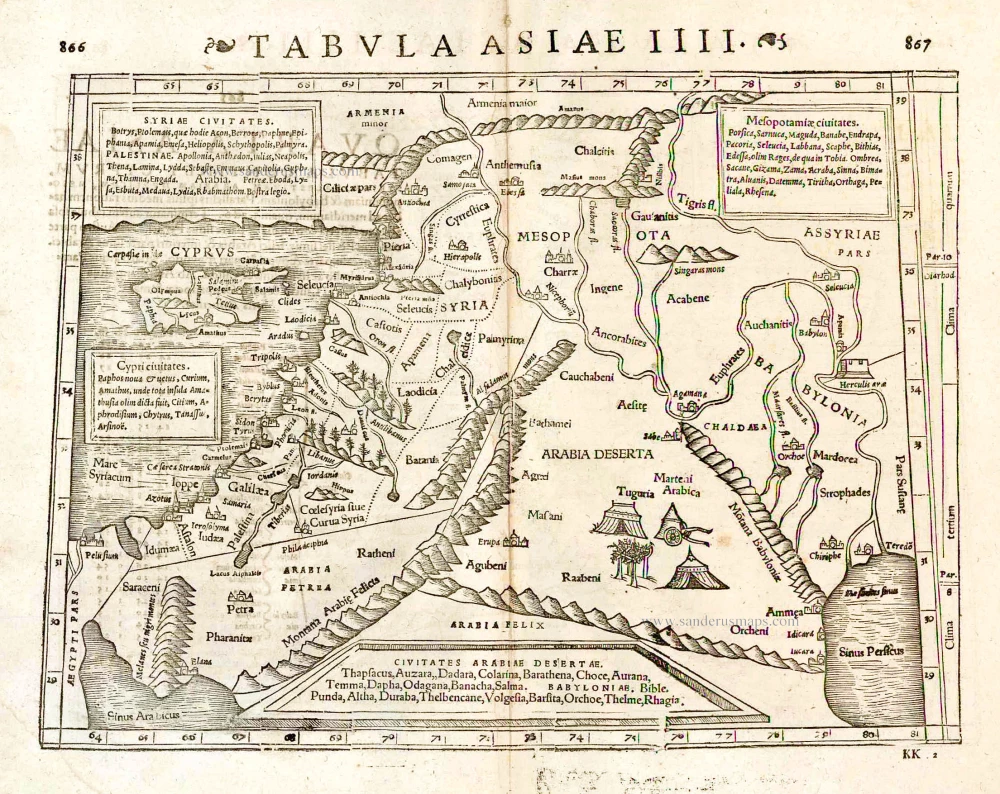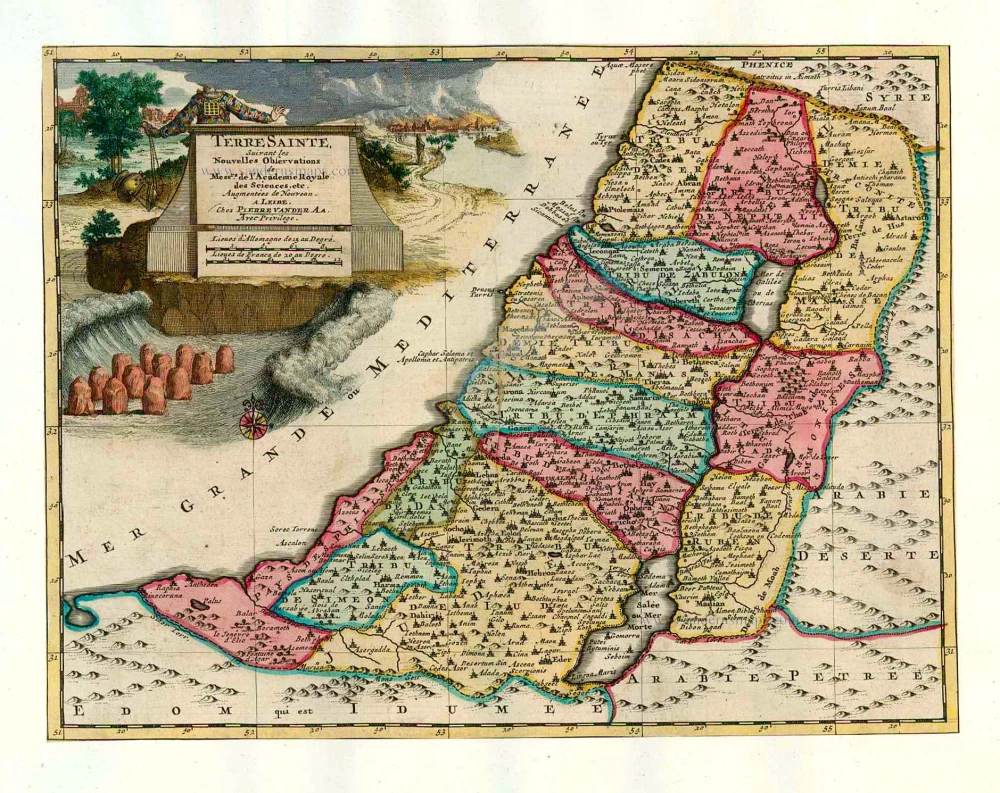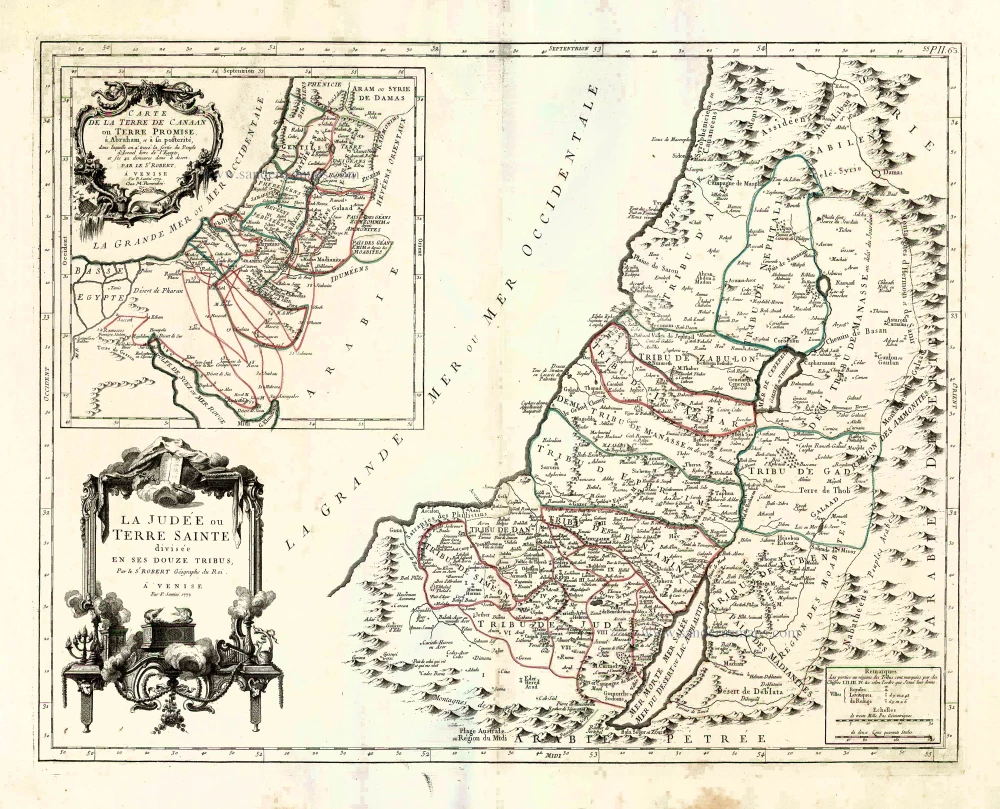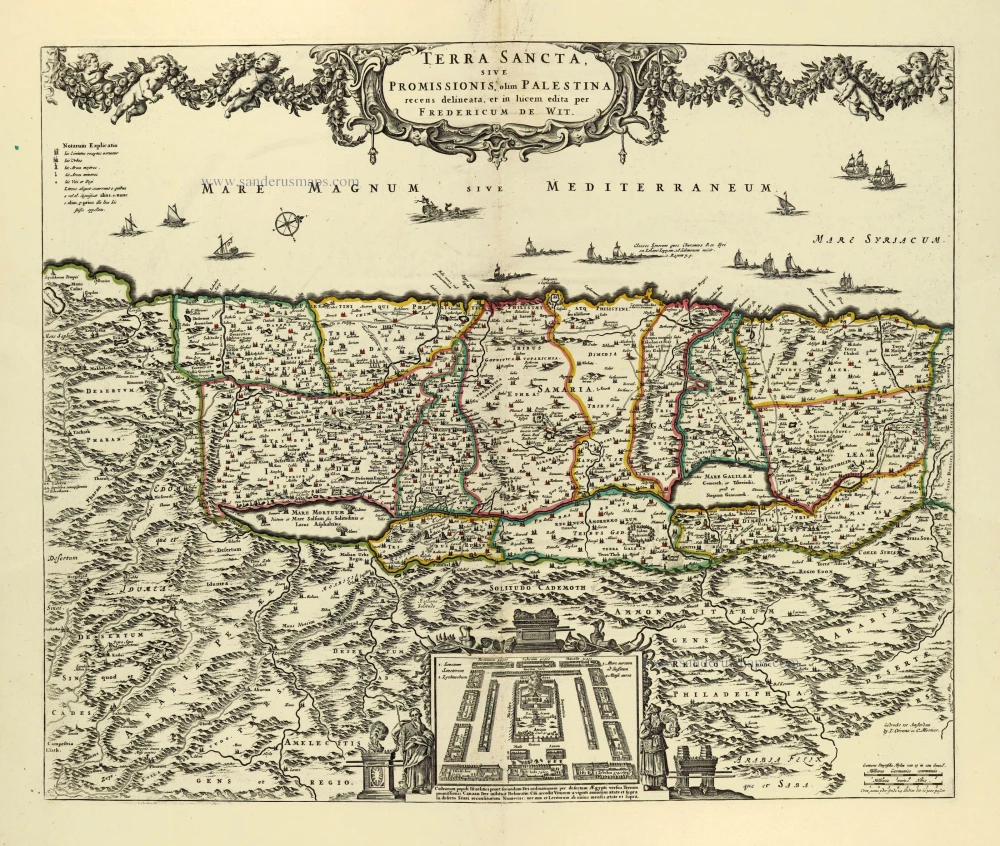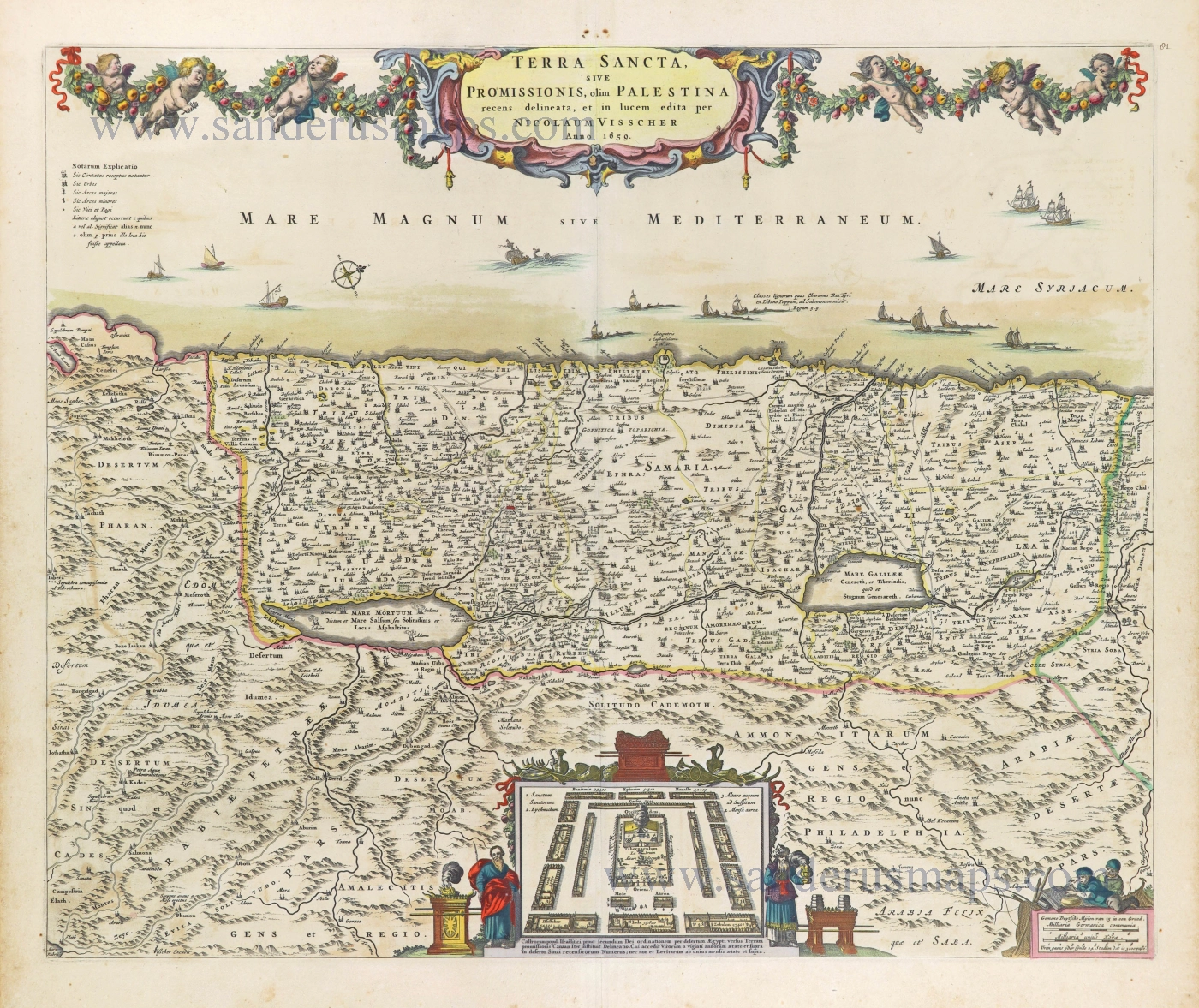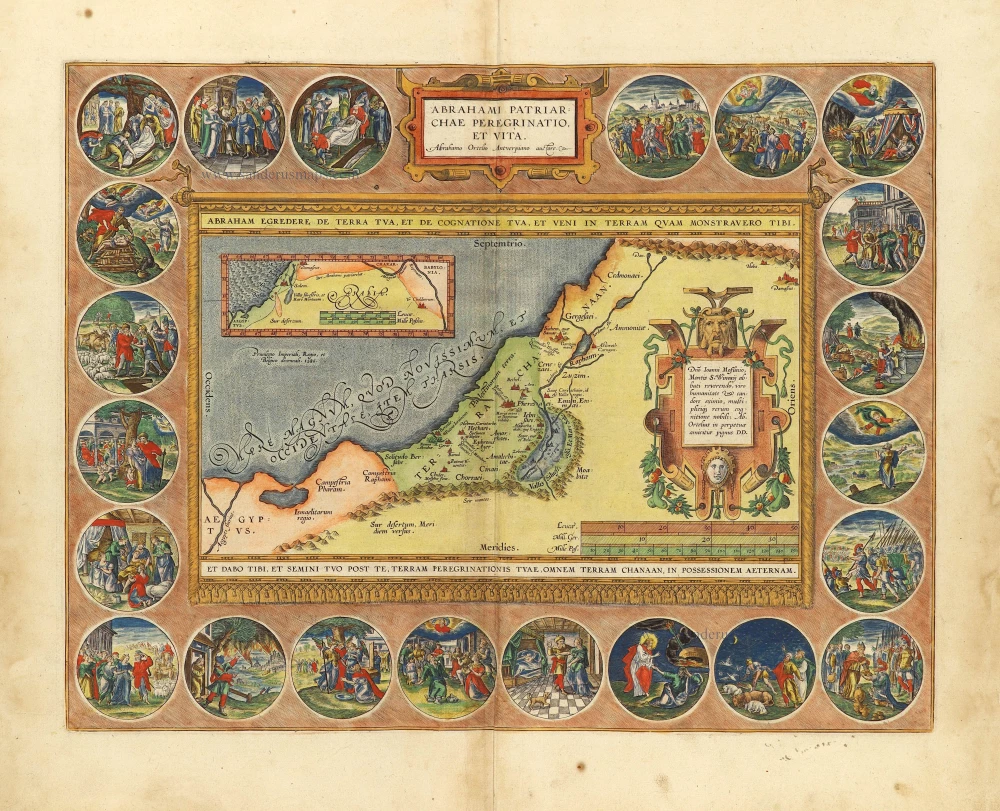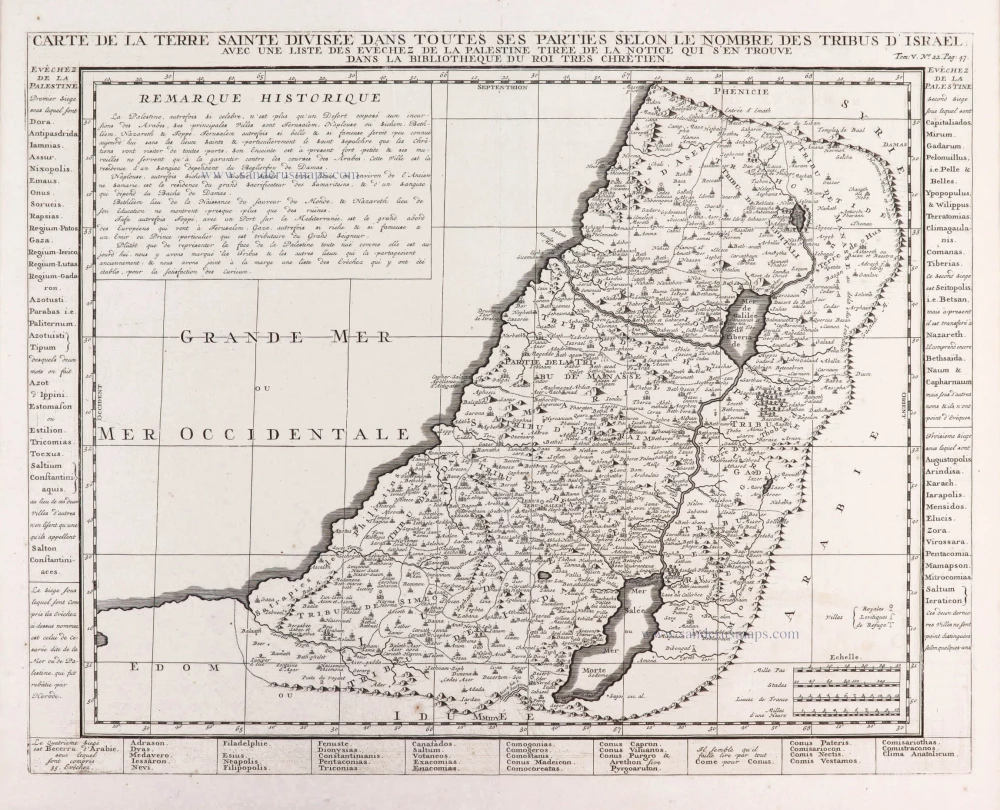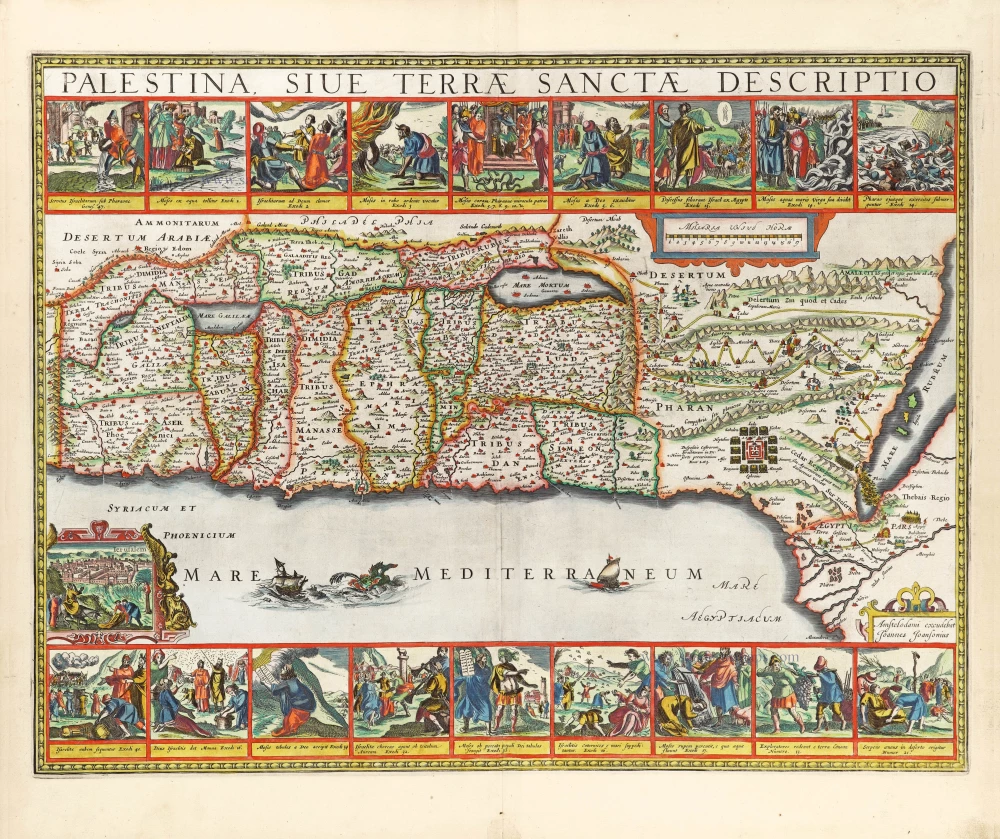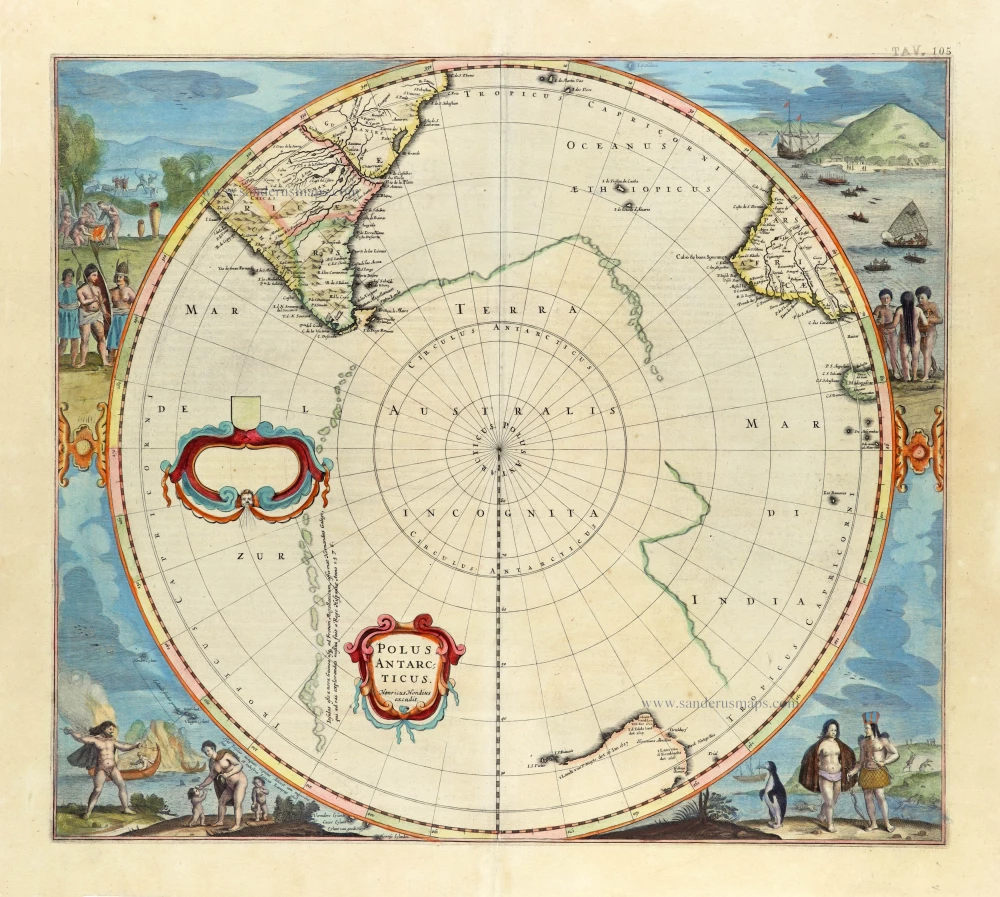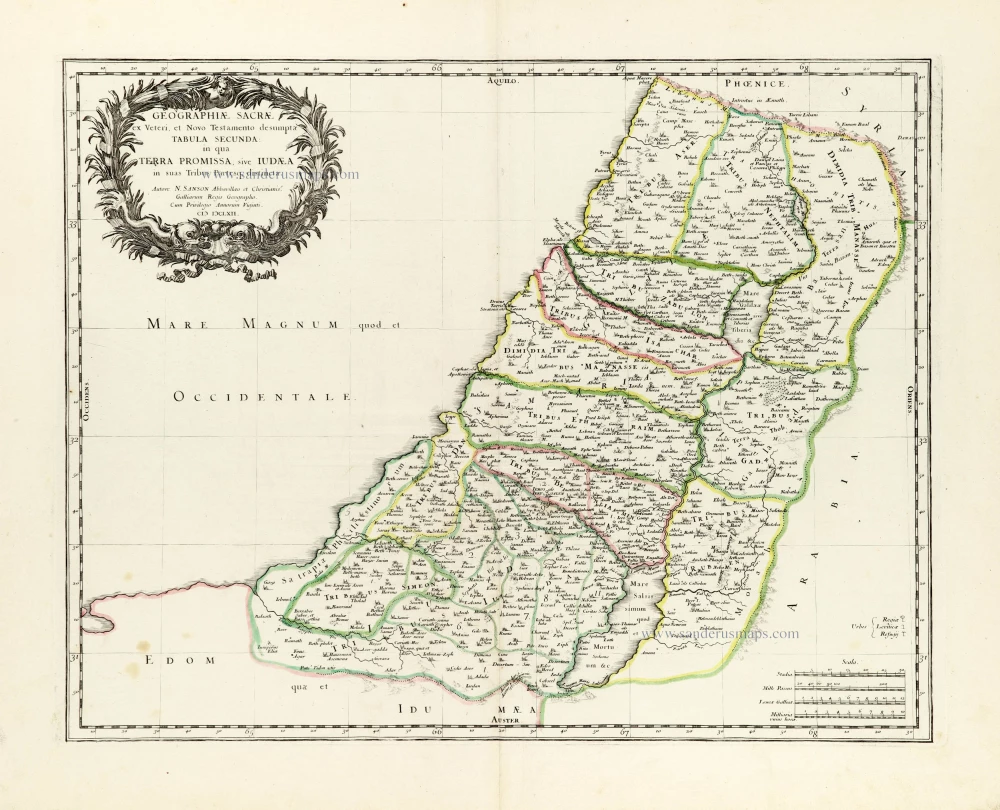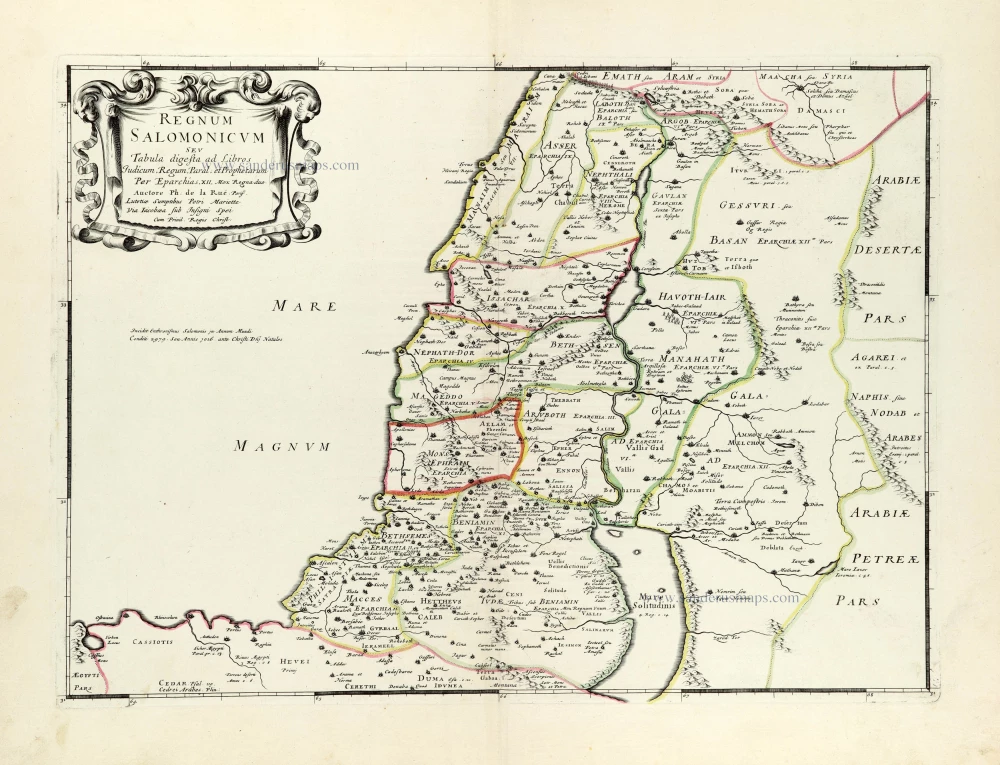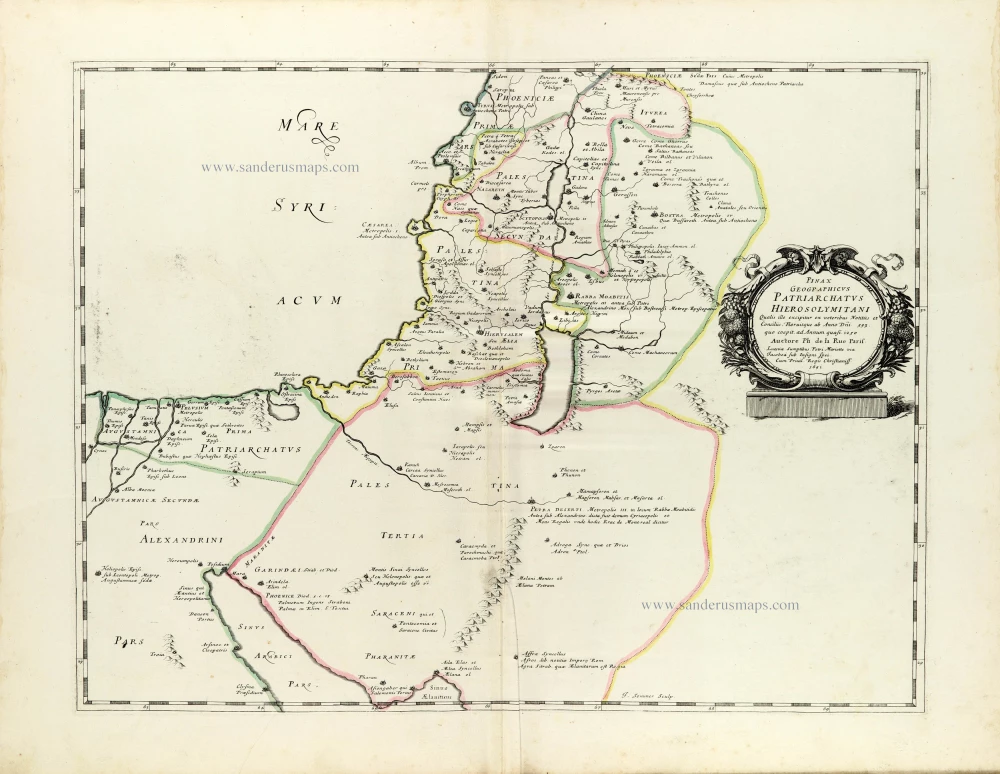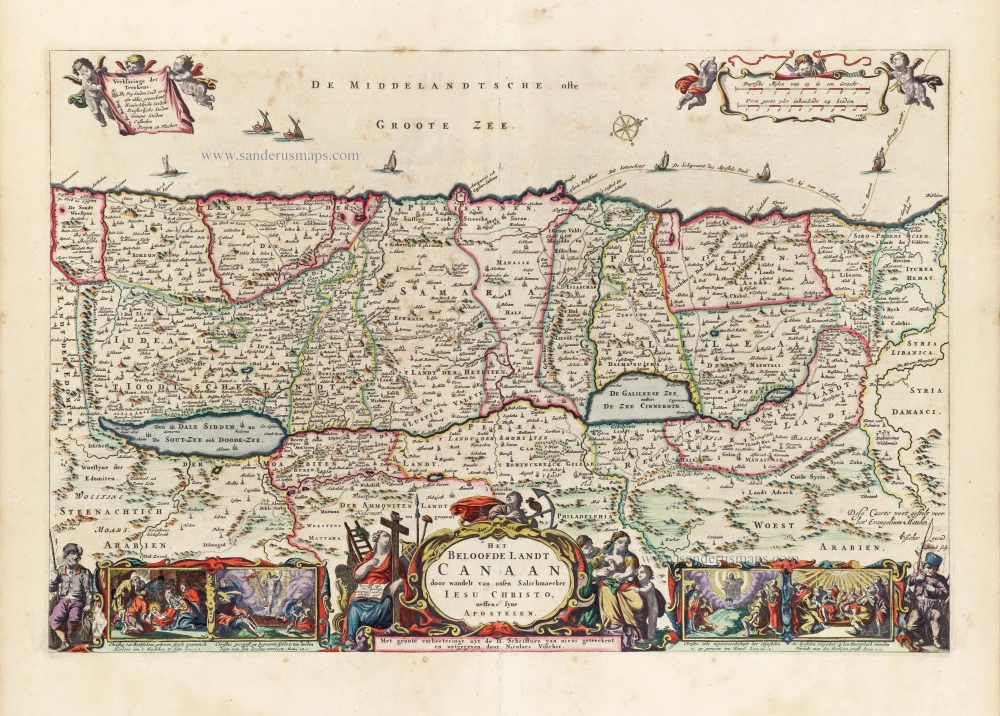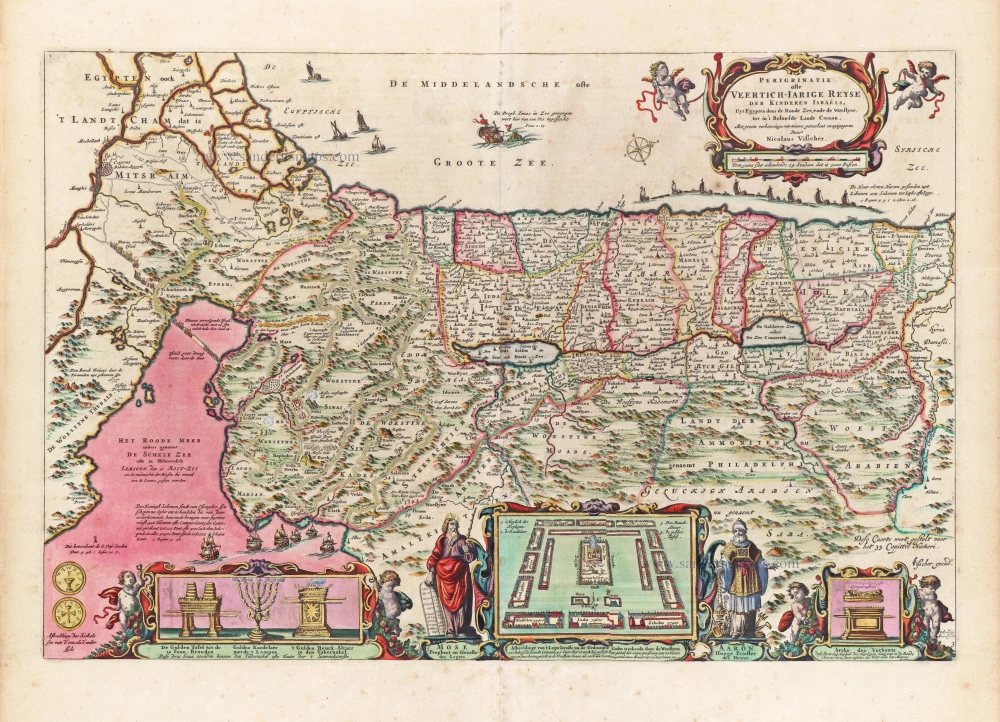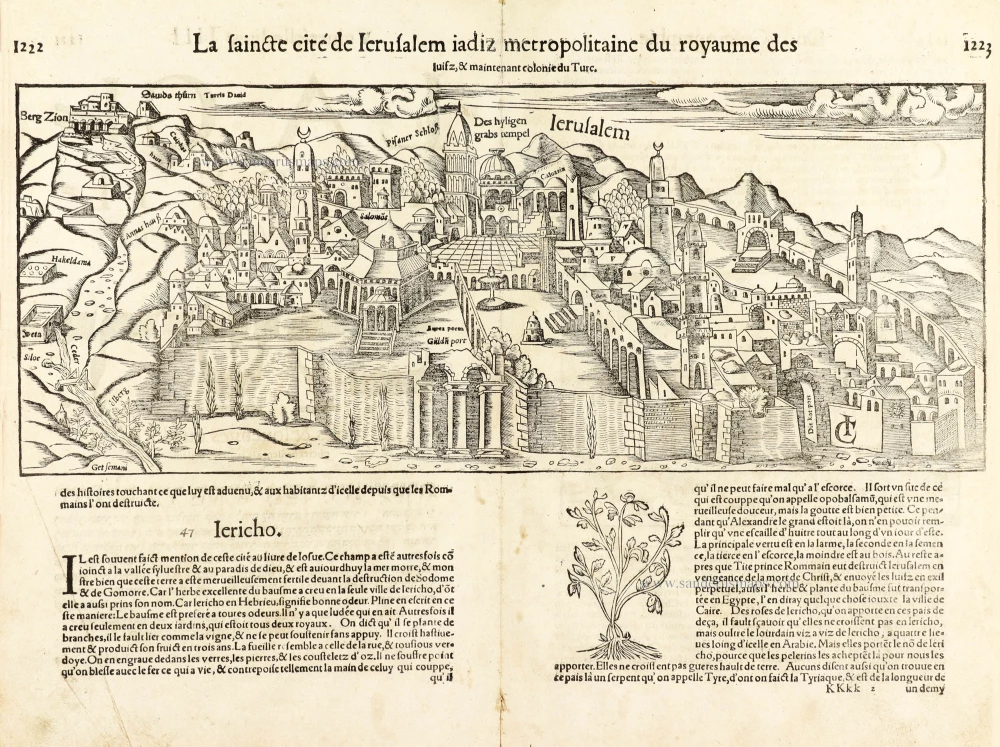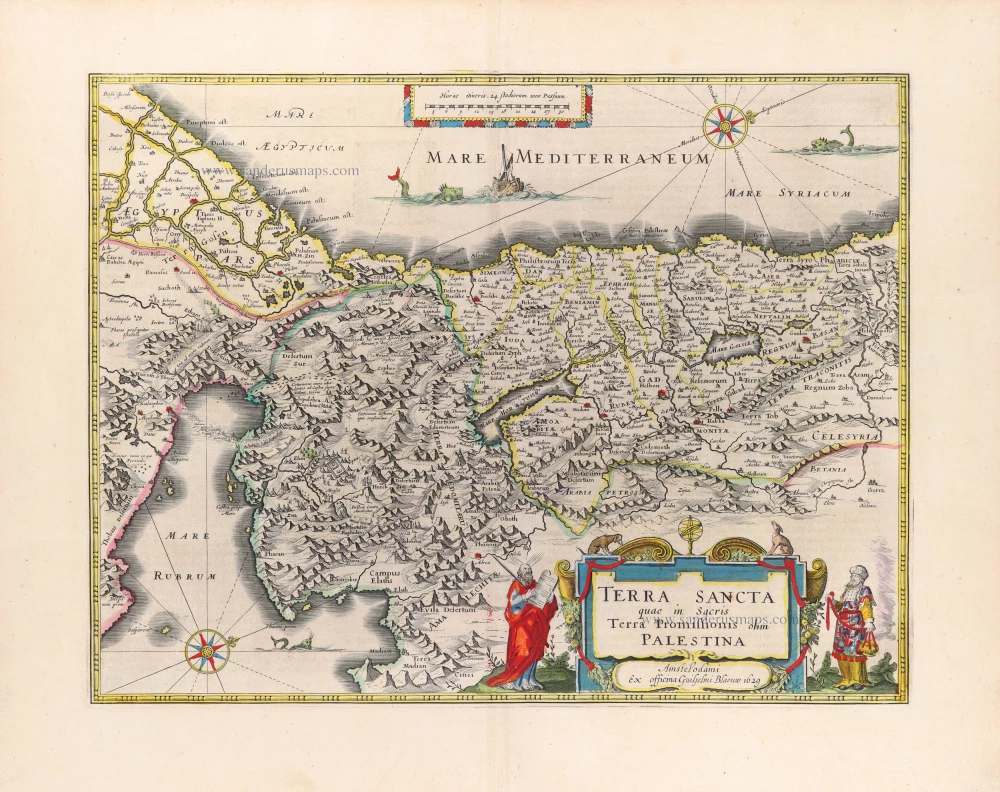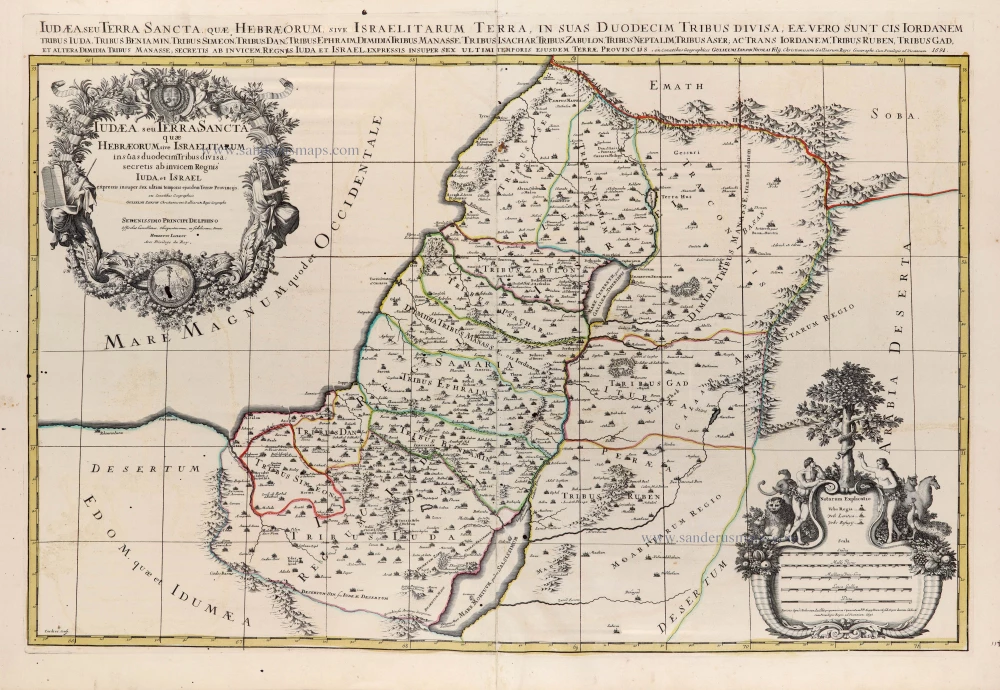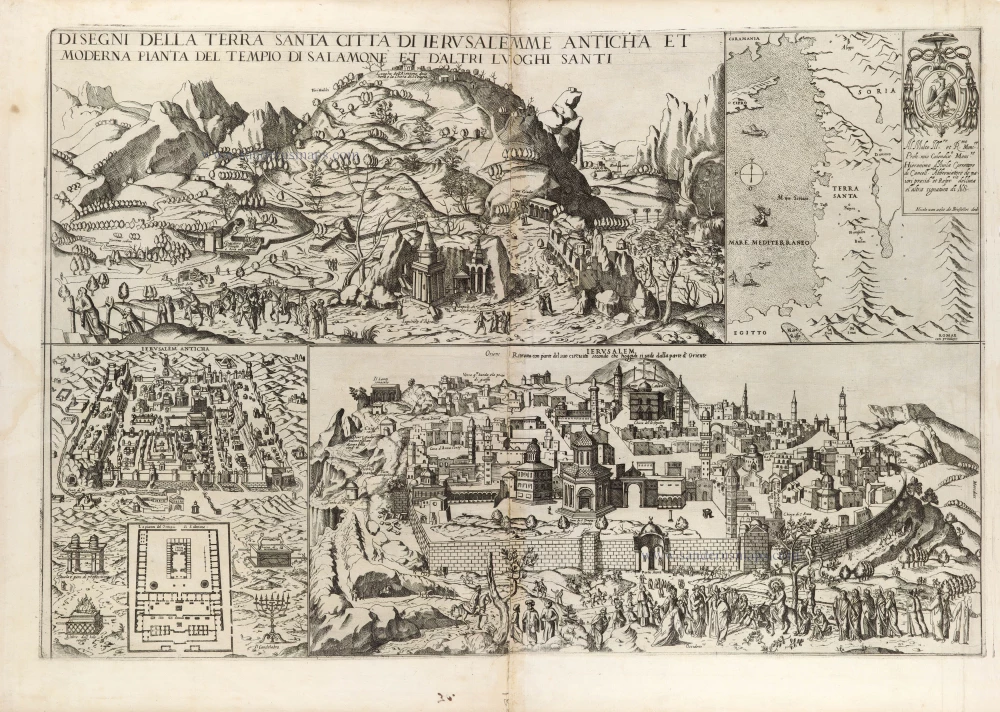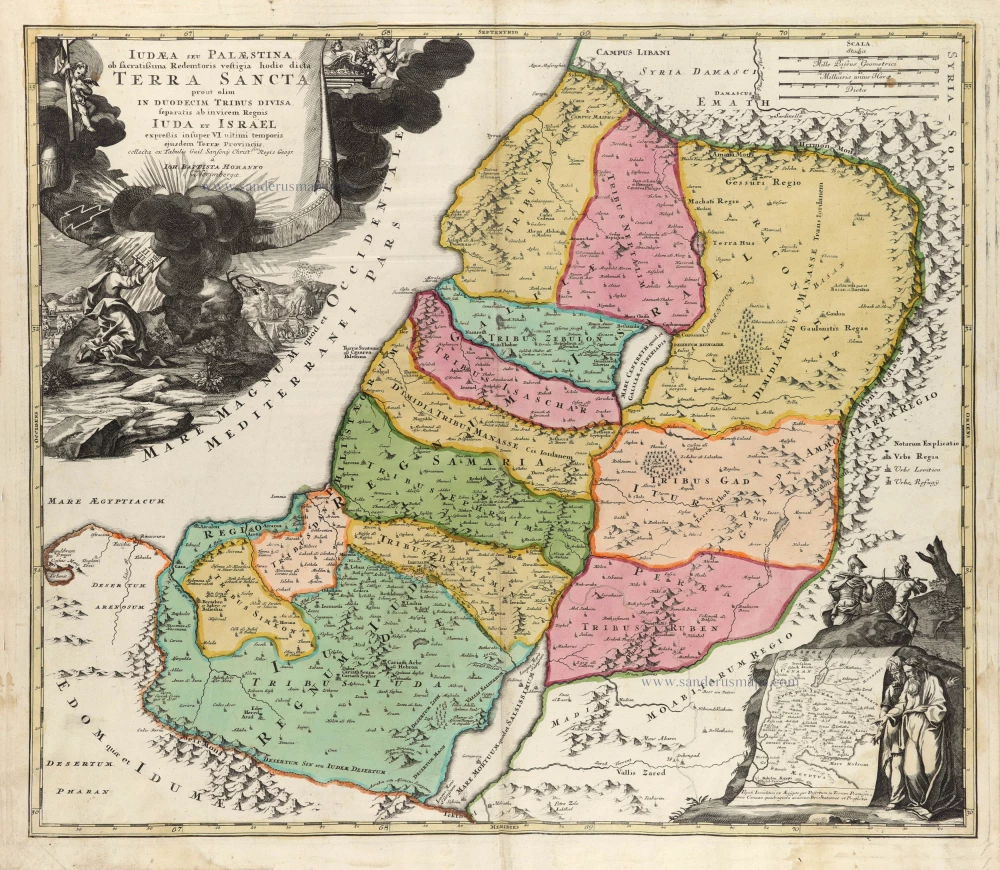Holy Land - Jerusalem by Philippe Briet, published by Pierre Mariette. 1641
The map is divided into two parts: the lower part, a map of Palestine entitled as above, oriented to the east and divided according to the Tribes on both sides of the Jordan. The shoreline runs from "Sidon" to "Rhinocolura". The upper part is divided into three small maps: 1) "Syriae veteris descriptio", showing the Eastern Mediterranean and the Near East; 2) "Hierusalem", a plan of the ancient city; 3) "Exodus Israelis", showing the Wanderings of the Tribes from Ramses in Egypt through the Red Sea and the Sinai Peninsula until they reached Palestine.
According to Laor, this map appeared in Philippe de La Rue's La Terre Saincte en six cartes géographiques, but Pastoureau, who gives the list of the six maps in this atlas, doesn't mention this map. (Pastoureau, Les Atlas Français XVIe-XVIIe siècles. p. 293)
Philippe Briet (1601-1668)
Jesuit priest of Abbeville, historian and cartographer. Author of historical maps; worked for Pierre Mariette and Michael van Lochom, Parisian publishers.
He published his Paralella Geographica in 1648, which contained 144 maps of Europe. He had intended to continue with the other continents but only produced a manuscript of the Asia tome, which was never published. Briet published two other atlases in 1653: the Theatre Geographique de l'Europe, with 79 maps, and the Theatrum Geographicum Europa Veteris, with 57 maps of ancient geography.
Palestinae Delineatio Ad Geographiae Canones Revocata.
Item Number: 30056 Authenticity Guarantee
Category: Antique maps > Asia > Holy Land
Rare antique map of the Holy Land - Jerusalem by Philippe Briet, published by Pierre Mariette.
Title: Palestinae Delineatio Ad Geographiae Canones Revocata.
A Paris, Chez Pierre Mariette en la Rue St. Iacques a l'enseigne de l'Esperance.
Avec Privilege du Roy. 1641.
Henri le Roy fecit.
Cartographer: Christian von Adrichom.
Engraver: Henri Le Roy.
Date of the first edition: 1641.
Date of this map: 1641.
Date on map: 1641.
Copper engraving, printed on paper.
Image size: 395 x 545mm (15.55 x 21.46 inches).
Sheet size: 490 x 640mm (19.29 x 25.2 inches).
Verso: Blank.
Condition: Original coloured in outline, lower centrefold split reinforced.
Condition Rating: A.
Separate publication.
The map is divided into two parts: the lower part, a map of Palestine entitled as above, oriented to the east and divided according to the Tribes on both sides of the Jordan. The shoreline runs from "Sidon" to "Rhinocolura". The upper part is divided into three small maps: 1) "Syriae veteris descriptio", showing the Eastern Mediterranean and the Near East; 2) "Hierusalem", a plan of the ancient city; 3) "Exodus Israelis", showing the Wanderings of the Tribes from Ramses in Egypt through the Red Sea and the Sinai Peninsula until they reached Palestine.
According to Laor, this map appeared in Philippe de La Rue's La Terre Saincte en six cartes géographiques, but Pastoureau, who gives the list of the six maps in this atlas, doesn't mention this map. (Pastoureau, Les Atlas Français XVIe-XVIIe siècles. p. 293)
Philippe Briet (1601-1668)
Jesuit priest of Abbeville, historian and cartographer. Author of historical maps; worked for Pierre Mariette and Michael van Lochom, Parisian publishers.
He published his Paralella Geographica in 1648, which contained 144 maps of Europe. He had intended to continue with the other continents but only produced a manuscript of the Asia tome, which was never published. Briet published two other atlases in 1653: the Theatre Geographique de l'Europe, with 79 maps, and the Theatrum Geographicum Europa Veteris, with 57 maps of ancient geography.

